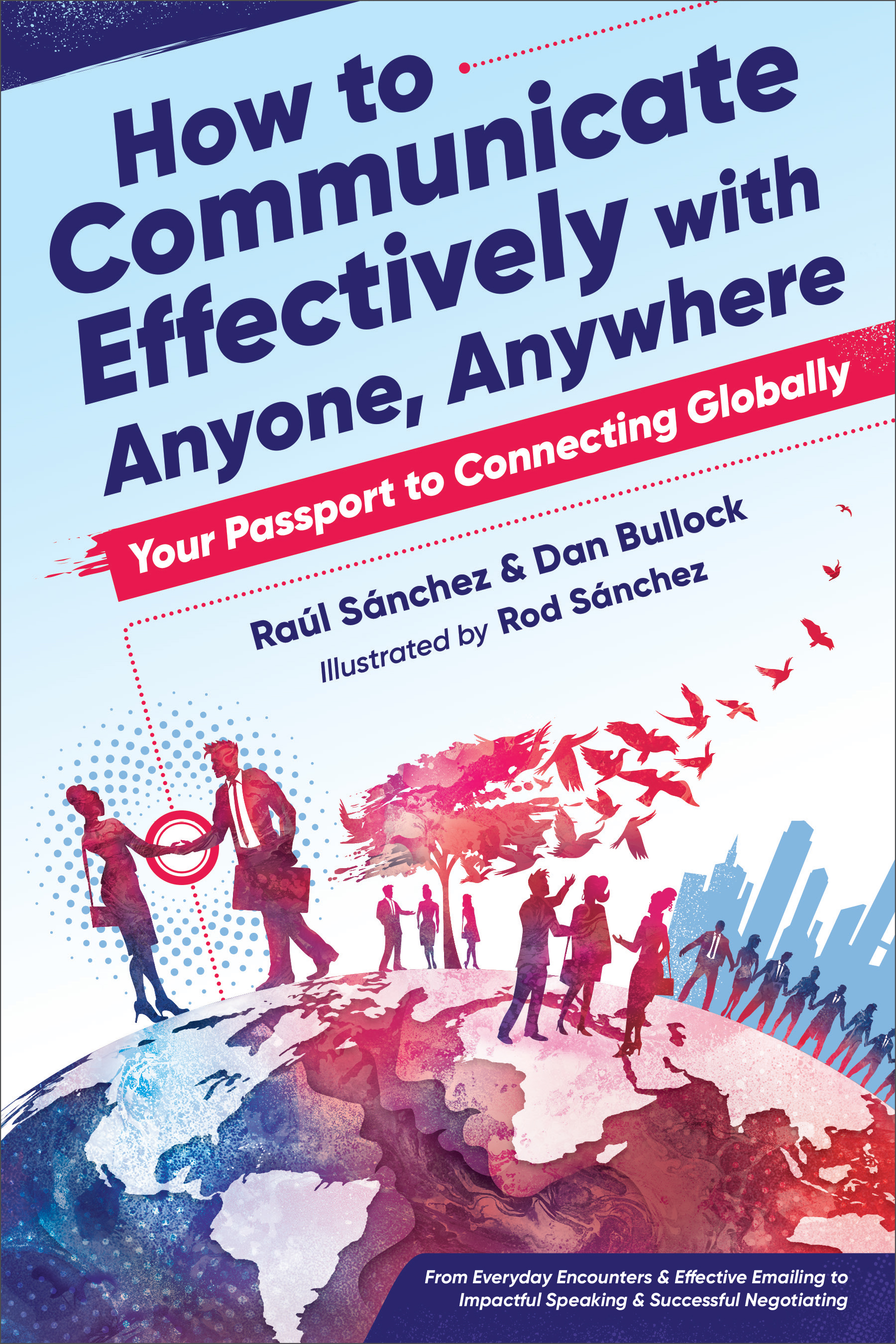The human breath is our life force and has a special physical and psychological power. Go ahead and intake a breath—feel the power course through your body, exciting each fiber of your being, as every cell within us—from our toes to our fingertips—relies on oxygen to move, express, and live. Then, when we speak, our breaths manifest an elemental force of communication that, when used effectively, expels into the vast mix of headwinds in the world. Fueled by the breaths of those that came before, our bodies shape the air in the act of expression.
Your body is your greatest communications instrument on this planet. This instrument can convey a multitude of emotions using a varied combination of such cues as vocal nuance, proximity, eye contact, posture, touch, and gestures—all of which enhance our communications to produce powerful messages that resonate in the air across cultures, time, and space.
Yet, breathing does more than fuel this greatest instrument for communication; breathing also cultivates mindfulness—a term that is now growing with importance in many corporate spaces, from Wall Street to Silicon Valley and beyond. Communication requires a mindful approach—we must be aware and awake to the present moment. Any focused activity can be used to trigger a mindful state, and “focused breathing” is seen as the most effective way to tune our body to this meditative state and to the nonverbals of others.
What does breath have to do with successful nonverbal communication? First of all, breathing stimulates the vagus nerve, the most powerful conduit in the parasympathetic, or “rest-and-digest,” nervous system, as compared to the sympathetic, or “fight-or-flight,” system. The vagus nerve is the longest and most important nerve in the body and connects the brain stem to multiple organ sites, including your heart, lungs, spleen, fertility organs, stomach, liver, kidneys, neck, ears, and tongue. Most importantly, when you activate your vagus nerve through conscious breathing, it primes your social engagement system:
| Global Nonverbal Tip: Breathe consciously to stimulate your vagus nerve and, in turn, your mindfulness. |
In addition to connecting the brain to the body and running through nearly all our organs, the vagus nerve is regarded as being responsible for the mind-body connection, which makes its stimulation crucial for nonverbal and verbal communication. Imagine the vagus nerve as the interpreter of your intentions through breath. If you slow your breathing, it slows your heart rate, sharpening your cognitive focus and ability to respond to new contexts.
Let’s suppose someone is crossing their arms while listening to you. Your senses immediately trigger a “fight-or-flight” response, suddenly perceiving this person as being “closed off” or distant. You, then, inconspicuously slow and control your breaths, stimulating the vagus nerve, lowering the stress-inducing adrenaline and cortisol hormones, and composing yourself into a “rest-and-digest” state, which gives you the clarity for decoding context in relation to communication. After all, the other person was actually just nervous or simply cold due to the temperature of the room. The point is that although messages are transmitted through nonverbal signals, those nonverbals cannot be separated from contextual meaning. Mindfulness is needed to decode them.
Mindfulness results from focused breathing which also triggers effective emotional responses. Pioneering research by psychologist and nonverbal expert Dr. Paul Ekman and Wallace V. Friesen who introduced the world to seven universal emotions: happiness, sadness, fear, anger, disgust, contempt, and surprise. These landmark findings built on the research of Charles Darwin, who was one of the first to study facial expressions in the context of evolutionary principles and who, along with later researchers, demonstrated that human facial expressions are universal (even among blind people).
One notable study by Ekman and Friesen involved showing participants of differing cultures highly-intensive films. When the participants viewed these films alone—their recorded facial expressions of emotion were identical. However, when participants viewed films with the experimenter present in the room—some cultures “masked” their negative emotions, by trying to retain a neutral expression or even force a smile. Based on these findings, Ekman and Friesen then coined the term cultural display norms to define the range of culturally-acceptable facial expressions of emotion, particularly between Japanese and American societies.
These transformational findings underscore an innate universality. Our actual facial expressions of human emotions are universal, with the key underpinning that sometimes our cultures will influence the display of those facial expressions and emotions. Results concluded that Western cultures tend to value and sanction outward emotional expressions, while Eastern counterparts may maintain an indirect approach, specifically masking negative emotions in social situations to maintain group harmony. Therefore, we have to do more than read body language—we must also link observations with mindfulness of cultural contexts and display norms.
Keep in mind that while it is important to observe others’ body language to know what they’re thinking and feeling, it’s not productive to simply memorize gestural meanings for specific situations as if we were storing an encyclopedia of movements in the library of our mind. Instead, context remains crucial to decoding nonverbal messages. The key is observing nonverbal patterns of intention.
Examine the following breathing patterns, which research provides as a guide for identifying the nonverbal intentions of others interculturally:
- Fast and heavy breathing: May signal high arousal, such as anger, nervousness, fear, love, excitement, or joy.
- Slow and steady breathing: May signal low arousal, such as relief, comfort, boredom, hopelessness, or sadness.
Evidently, while the above patterns are useful observational guides, each also requires mindfulness to be practical—the truth depends on the situation. Seeing a coworker inhale a long intake of breath could mean they are exasperated, pleasantly surprised, or just ramping up for a tirade of angry words.
To arrive at a mindful state that paves the path to better nonverbal and verbal communication, we first have to breathe in—and train ourselves to focus on our own breaths.
| Global Nonverbal Tip: Connect mindfulness with patterns of intention to enhance nonverbal communication. |
Culturally, awareness of breath has for a long time held a significant place in both Eastern and Western traditions and has been a core aspect of world views and knowledge systems. Whether we refer to breath as prana, ch’i, or pneuma, breath is central to well-being in both our personal and our professional lives. Most importantly, when we focus on our own breathing, a space for patience and compassion is born.
We have to rethink breathing as being a facilitator of health—breathing is also a practical tool that awakens our senses. As an axis between vocalics and body language, breathing serves as an essential conduit to communication, creativity, and beyond. Chanting, yoga, exercise, even laughter all involve breathing and stimulate meditative states, as well as the vagus nerve.
What is psychologically important to us, in terms of communication outcomes, is liberating ourselves from the idea that breath is only automatic—breath is also controllable. Our bodies naturally inhale between seventeen thousand and twenty-three thousand breaths per day on average—however, we always have the ability to engage in the type of breathwork the global business world is embracing called conscious breathing.
Instead of allowing work to dictate erratic adjustments in our breathing patterns, we can breathe consciously, which research has shown can lead to improved decision-making on the job and deeper connections. Our breath is the only part of our nervous system that we can control, which means that we can easily and practically access this mechanism to shift our thoughts or feelings. We can stimulate our vagus nerve like strumming a magical harp that has the never-ending power to restore us to equilibrium.
Stimulating our vagus nerve reduces brain anxiety, sends our visceral organs into “rest-and-digest” mode, and heightens our ability to fine-tune emotional responses. Breathing primes us for nonverbal and verbal communication.
When altering our breathing patterns, we alter our state of being. Conscious breathing not only allows us to arrive at clearer thoughts and better decisions, it also allows us to recognize the nonverbal patterns of others and respond more effectively to situations, rather than simply react to them.
Our breath allows us to create a new human subjectivity. With breath, we connect fully with our bodies and activate the forgotten language of our gestures and vocal sounds. Breath reminds us that in the act of breathing, we do more than just realize and exhale the past, but also realize and inhale the future that is right in front of us.

Excerpted from How to Communicate Effectively with Anyone, Anywhere by Raúl Sánchez and Dan Bullock, illustrated by Rod Sánchez. Excerpted with permission from the author and publisher © 2021. Published by Career Press, an imprint of Red Wheel/Weiser, March 1, 2021.
You can read more about the book and purchase your copy here.


